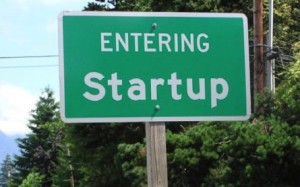The world is an incredibly connected place today and this has effected huge change in the way that we do business.
During the 20th century, most corporations developed their expertise internally, carefully protected their innovation jewels (both in terms of ideas and people) and gained sustainable competitive advantage through delivery of “simple” functional benefits, superior performance, better value, and reliable delivery.
In the latter stages of the century, the world was changing rapidly. Consumers were becoming more demanding, looking for personality in products and services and wanting to share their views with each other and the world at large. This was, and remains, especially true for younger people.
The business response has been to develop processes that build business-relevant innovations in several ways: using cross-sector networks, with more open access to data, based on competitions and challenges, and crowd-sourced solutions, with everyone, including the end-user, involved. Processes that we bundle together as “Open Innovation”.
The recent lessons from around the world are that these methods and approaches might not only be applied to wealth-creating business development, but also to social innovation challenges that we face within our communities.
But are we applying them this way, especially in the context of the challenges that we face here in the North East? I believe that we have a distance to go. First, there is limited understanding within our key institutions of the leading-edge innovation process concepts that I have outlined. Second, only among some enlightened societal thought-leaders has there been examination of global best-practice open innovation approaches that we might reapply.
The good news, and the basis for significant optimism, is that there is positive indication among community leaders that “more of the same” is not going to provide breakthrough on our social challenges and that open innovation principles and practice can create new impetus for change. It is also especially interesting for me to see that younger people have passion for this collaborative approach to change.
What we need to do, and I will be doing my best to engage on this, is to identify those key problems/opportunities for radical innovation and to develop exciting approaches to deal with them quickly and with the spirit of committed, iterative progress.
My personal view on where we might make the most difference? Well, there are plenty of opportunities, but without doubt we can lead change in the area of education, probably with a focus on primary, STEM and the disadvantaged.
There are open innovative approaches around the world that could make a difference here, and this is the perfect field within which business, schools, FE/HE and public services can come together, if we are willing to challenge existing paradigms and test new approaches in a creative, open and forgiving way – true Common Cause Innovation.
Finally, I have no doubt that we can also build open innovation practice within core regional businesses, especially those key technology growth drivers. The ones that form the hub of our future North East prosperity.
But that’s the subject for next time…

